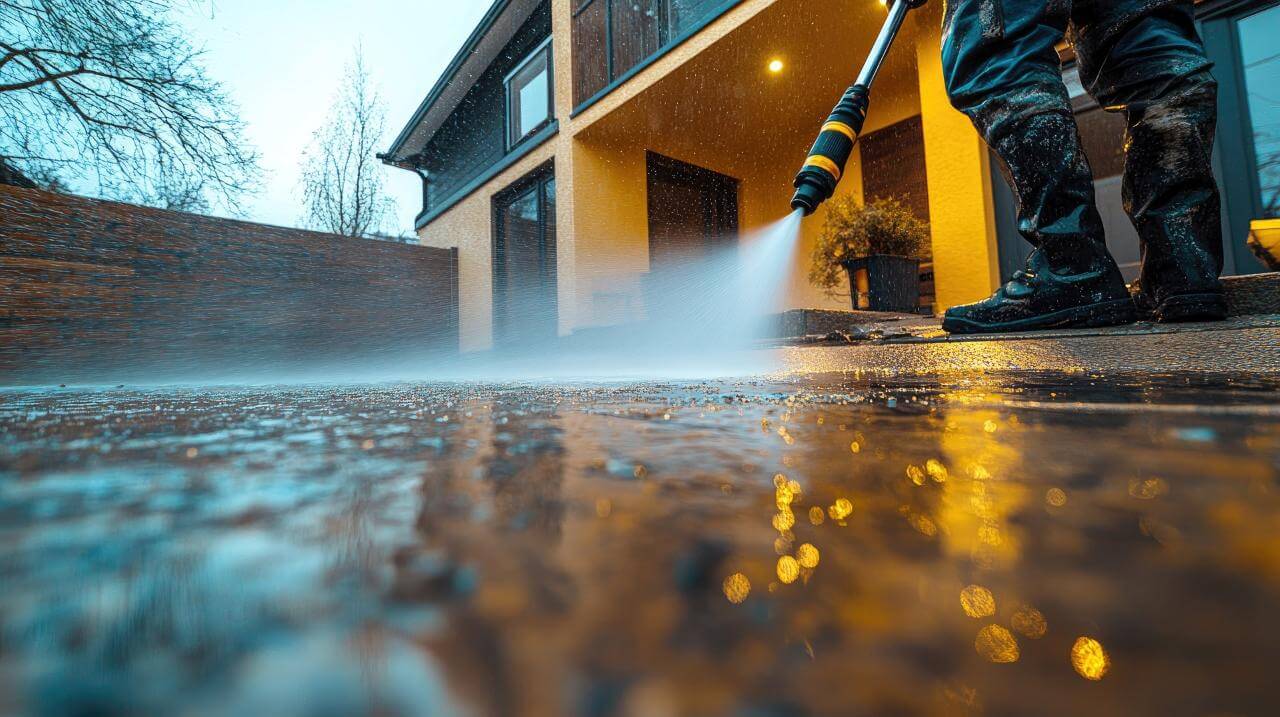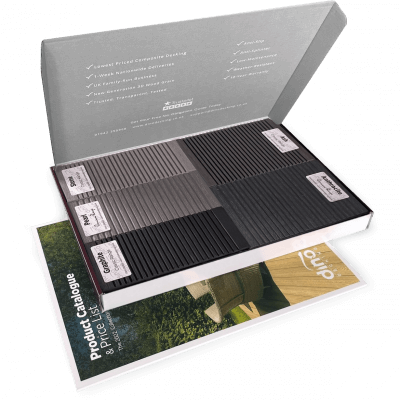
Do You Need Planning Permission for Cladding?
If you’re considering installing cladding on your home or in the garden, you’ve probably asked the question, ‘Do you need
Products in Stock
Lowest Prices
Express Delivery
10-Year Warranty
December Sale. Up To 15% Off.
Composite decking has many advantages over traditional wooden decking, but it can have a few drawbacks – one of which is static. If you’re wondering how to stop static electricity on composite decking, we’ll take a look at some of the things you can do in this guide.
Composite decking has become increasingly popular over the past few years and there are plenty of reasons why. When you compare composite vs wood decking, you’ll find that composite is far more durable. It’s more resistant to water, mould, rot and warping, and it’s easier to maintain. One potential drawback is the fact that static electricity can build up on composite decking, particularly in dry conditions and environments. There are, however, a number of simple steps you can take to deal with composite decking and static electricity.
If you’re wondering how to get rid of static on composite decking, anti-static spray offers a convenient option. Anti-static sprays are products that can be sprayed directly onto the boards to prevent static build-up. They work by leaving an invisible layer that allows static to dissipate rather than building up.
As a cheaper alternative to commercial anti-static sprays, you could try watering down fabric softener until it is sprayable to achieve the same basic effect.
Rubber mats or special anti-static matting are often used in countries with warm, dry climates, which can be more prone to static build-up. You might have noticed them used in bars, restaurants and public spaces with high footfall, or placed under furniture to prevent users from getting a shock. There are different types of ant-static matting, but they generally work by discharging the electricity before it reaches nearby objects or people.

Plants emit moisture through a process called transpiration. Because static build-up is more likely in dry conditions, this can help prevent the issue of composite decking and static electricity. Check out our ultimate gardening guide and decking planter ideas for inspiration on combining plants with composite decking.
In order to create a more humid environment, you could also spray the deck with water or add a humidifier to the deck instead of or alongside plants.
Composite decking board inserts are generally used to prevent the build-up of dirt between boards, but rubber ones can also be used to limit the build-up of static electricity. However, this is not a perfect solution and may not completely eliminate the problem.

Regularly cleaning your deck is a good idea as it can help keep your composite decking looking spick and span and extend its lifespan. It can also reduce static electricity by introducing moisture to your deck and getting rid of any residing static. Read our handy guide to learn how to clean composite decking in 5 easy steps.
Yes, static electricity will eventually go away on its own, but it can be difficult to predict how long this will take.
The plastic in composite decking can act as an insulating material, which is why some people can experience static electricity on their composite decking in the first place. It tends to be worse when the decking is new and will usually improve as the decking boards weather. It’s also worth remembering that static is usually only an issue in drier climates. This means that many decking owners in the UK will not even notice static build-up on their decks.
Wearing shoes with conductive soles or going barefoot can limit the static build-up on the composite decking. This is because friction is the main cause of static build-up. If there is already a static charge, however, you might feel it more in bare feet!
While regularly cleaning your deck is generally a good thing, using abrasive cleaners is not a good idea. These products can damage the deck and the polymer coating if the decking is capped, as well as causing more static electricity. You’ll want to use a high-quality composite decking cleaner for best results. Read our guide, ‘Can you jet wash composite decking?’ for more info.
Some websites recommend using grounding rods, but there’s no real evidence that these copper rods do anything to reduce static electricity. Since composite boards trap static rather than conduct it, grounding rods will actually do very little and are not a great solution when trying to stop static on composite decking.
If using salt to de-ice, be careful not to damage the deck as it can cause more static electricity. You should generally avoid using rock salt on composite decking altogether.
You should avoid using harsh chemicals such as WD40 on composite decking, as they could erode and damage the deck. Ultimately, this could cause more static, rather than less. Only approved chemicals should be used on composite decking, and these can be confirmed by your manufacturer.
Static build-up can be caused by a number of factors, including temperature, dryness (low humidity) and even your footwear. Static is not generally a big problem for decks in the UK, but if you do keep getting small shocks, you can try some of the tips in this guide.
You can put salt on composite decking to increase traction and melt ice, but be careful not to use too much and avoid harsher salts such as rock salt. These can be abrasive and cause damage to the decking cap or the surface of the decking itself which may result in more static electricity.
Composite decking has a number of benefits compared to traditional timber decking. It is more durable and long-lasting, with a sturdy design that is resistant to mould, warping and splintering. It is also eco-friendly and it looks great.
If you are considering composite decking, you might be a little concerned about the possibility of static electricity. This is generally more of an issue in hot and dry climates and so is rarely a big problem with the British weather. Some people do experience static build-up, especially in dry periods during the summer, but reducing static isn’t that hard if you know how to do it and put in a little effort. The benefits of composite decking definitely outweigh this potential problem, so check out our range of Dino Decking composite decking today.

Our sample pack contains a sample piece of each colour currently available. Order your free sample pack today to compare the colours and get a true feeling of the Dino Decking range!

If you’re considering installing cladding on your home or in the garden, you’ve probably asked the question, ‘Do you need

If you’re looking to go all out this festive season, you might be looking for some fantastic Christmas garden ideas